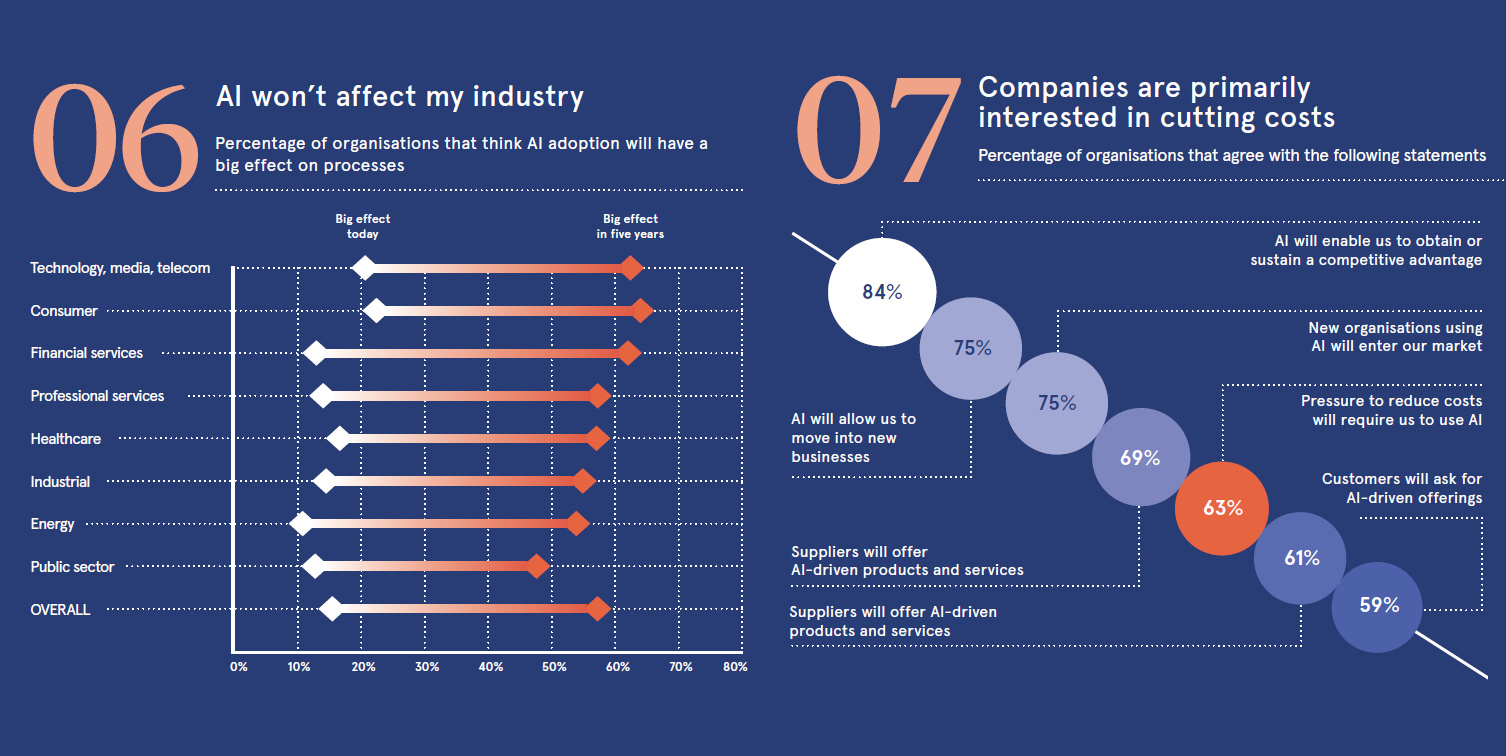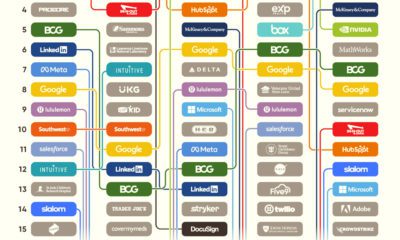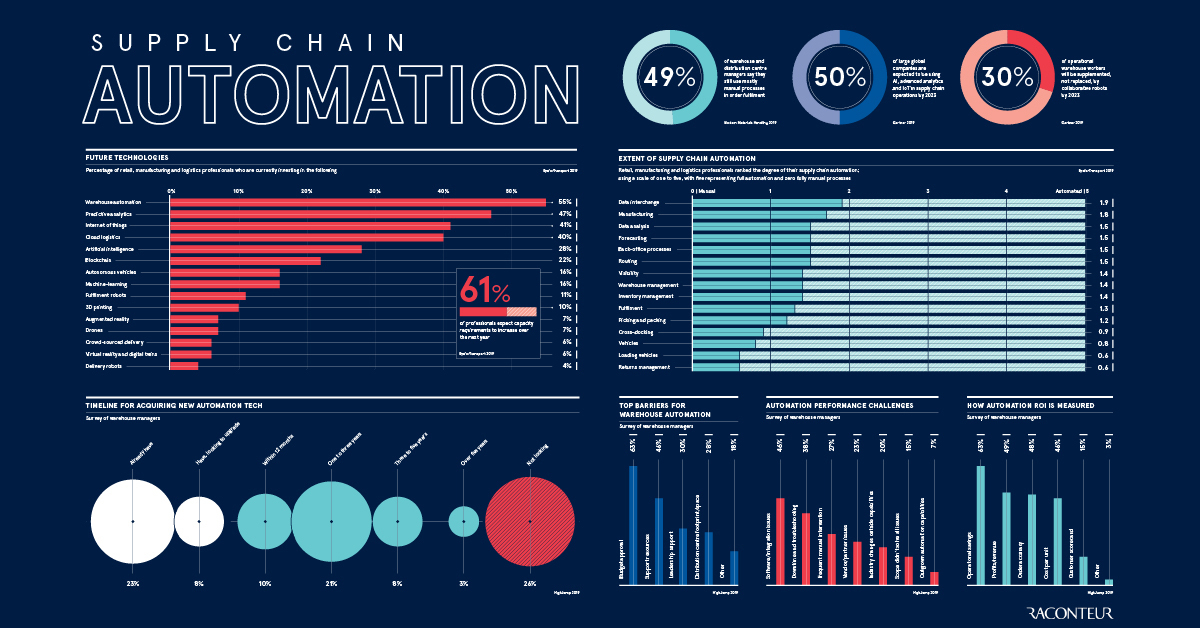While technology has typically created more jobs than it has destroyed on a historical basis, this context rarely stops people from believing that things are “different” this time around. In this case, it’s the potential impact of artificial intelligence (AI) that is being hotly debated by the media and expert commentators. Although there is no doubt that AI will be a transformative force in business, the recent attention on the subject has also led to many common misconceptions about the technology and its anticipated effects.
Disproving Common Myths About AI
Today’s infographic comes to us from Raconteur and it helps paint a clearer picture about the nature of AI, while attempting to debunk various myths about AI in the workplace.
AI is going to be a seismic shift in business – and it’s expected to create a $15.7 trillion economic impact globally by 2030. But understandably, monumental shifts like this tend to make people nervous, resulting in many unanswered questions and misconceptions about the technology and what it will do in the workplace.
Demystifying Myths
Here are the eight debunked myths about AI:
- Automation will completely displace employees Truth: 70% of employers see AI in supporting humans in completing business processes. Meanwhile, only 11% of employers believe that automation will take over the work found in jobs and business processes to a “great extent”.
- Companies are primarily interested in cutting costs with AI Truth: 84% of employers see AI as obtaining or sustaining a competitive advantage, and 75% see AI as a way to enter into new business areas. 63% see pressure to reduce costs as a reason to use AI.
- AI, machine learning, and deep learning are the same thing Truth: AI is a broader term, while machine learning is a subset of AI that enables “intelligence” by using training algorithms and data. Deep learning is an even narrower subset of machine learning inspired by the interconnected neurons of the brain.
- Automation will eradicate more jobs than it creates Truth: At least according to one recent study by Gartner, there will be 1.8 million jobs lost to AI by 2020 and 2.3 million jobs created. How this shakes out in the longer term is much more debatable.
- AI won’t affect my industry Truth: AI is expected to have a significant impact on almost every industry in the next five years.
- Companies implementing AI don’t care about workers Truth: 65% of companies pursuing AI are also investing in the reskilling of current employees.
- High productivity equals higher profits and less employment Truth: AI and automation will increase productivity, but this could also translate to lower prices, higher wages, higher demand, and employment growth. Still worried about AI’s impact on your career? Here’s a list of 10 skills that will help you survive the rise of the robots in the workplace.
on For this reason, companies around the world are now rethinking their warehouse and distribution systems, with automation taking center stage. Today’s infographic from Raconteur highlights the state of automation across global supply chains, while also providing an outlook for future investment.
Long Time Coming
Let’s start by taking a look at what supply chain technologies are priorities for global industry investment in the first place: *Based on survey of supply chain professionals in retail, manufacturing, and logistics fields As seen above, warehouse automation has already received more investment (55%) than any other supply chain technology on the list, as companies aim to cut delivery times and improve overall margins. Interestingly, other areas receiving significant investment—such as predictive analytics, internet of things, or artificial intelligence—are technologies that could integrate well into the optimization of supply chain automation as well.
Smoothing the Transition
While fully automated supply chains in most industries may still be a few years away, here is how companies are investing in an automated future today: According to the above data, over 70% have already integrated automation technology, or are planning to within the next five years. On the flip side, over a quarter of warehouse managers are not currently looking to integrate any new automation tech into their operations at all.
Adoption Rates and Growth
As supply chain automation gains momentum and industry acceptance, individual processes will have varying adoption rates. Take order fulfillment, for instance. Here, only 4% of current operations are highly automated according to a recent survey from Peerless Research Group: Meanwhile, 49% of operations were primarily manual, illustrating potential for growth in this particular area. It’s worth noting that other individual supply chain components, such as conveyor belts, storage, automated guided vehicles, and shuttle systems, will all have differing trajectories for automation and growth.
Post-COVID Supply Chains
The COVID-19 pandemic has shown us that complex supply chains can become fragile under the right circumstances. As supply chains see increased rates of automation and data collection becomes more integrated into these processes, it’s possible that future risks embedded in these systems could be mitigated.
















